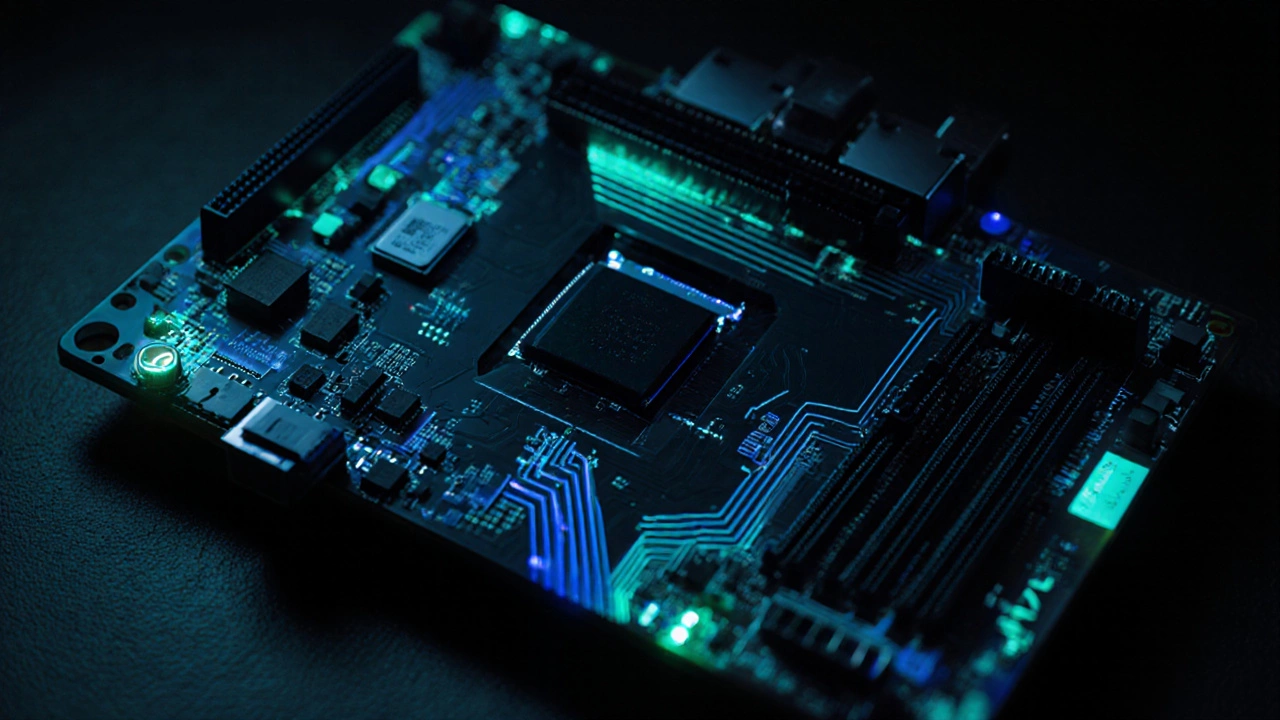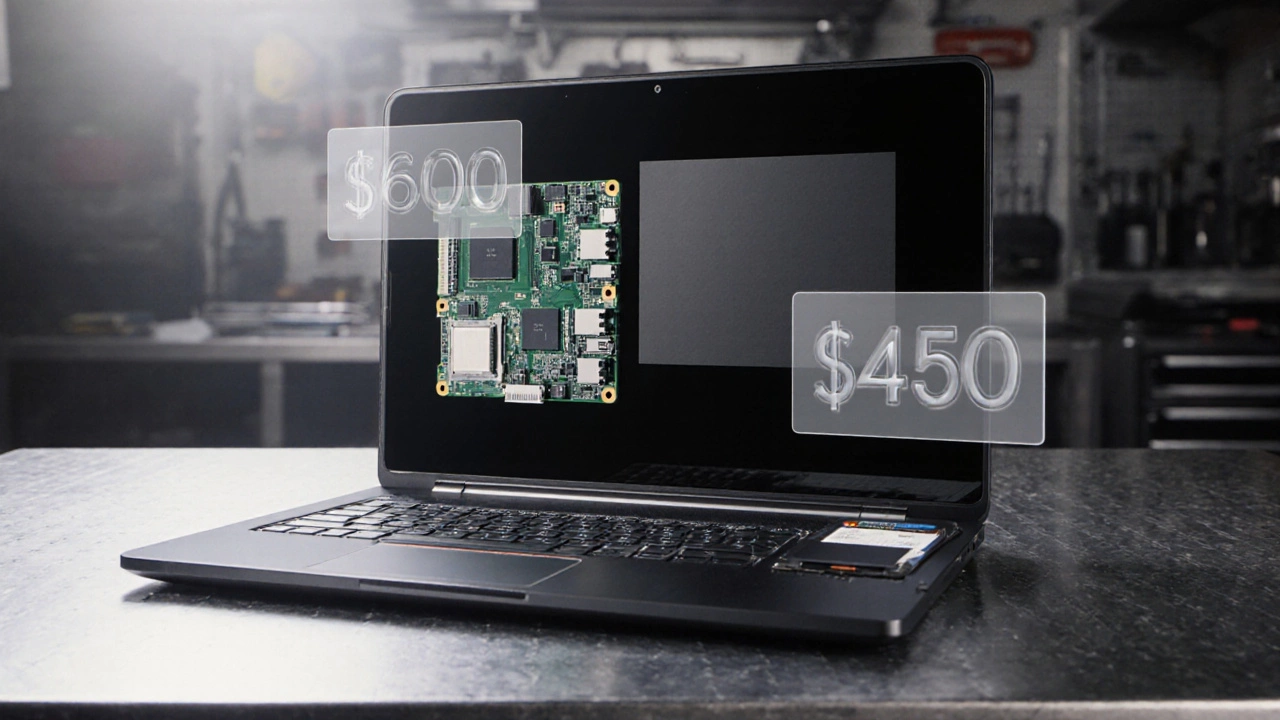Laptop Repair Cost Calculator
Estimate Your Repair Cost
When a laptop breaks down, the repair bill can feel like a shock. You might wonder which component is draining your wallet the most. Understanding the cost drivers helps you decide whether to fix or replace. Below we break down the parts that typically top the price list, why they’re pricey, and how you can keep repair expenses in check.
Key Takeaways
- The most expensive laptop repair part is usually the motherboard (also called the logic board).
- Display replacements come in a close second, especially for high‑resolution or touch screens.
- Battery, keyboard and SSD repairs are far cheaper, often under $200.
- Labor rates, OEM part availability, and warranty status heavily influence the final cost.
- Regular maintenance and prompt troubleshooting can prevent costly component failures.
Understanding Laptop Repair Costs
Repair pricing splits into two buckets: parts and labor. Parts vary by brand, model year, and whether you need an OEM (original equipment manufacturer) piece or a compatible aftermarket one. Labor depends on the complexity of disassembly, the technician’s skill level, and regional rates - in Auckland, average labor hovers around NZ$80-120 per hour.
Common Laptop Parts and Their Typical Repair Prices
Below is a snapshot of the most frequently serviced components, paired with average costs (parts + labor) in 2025 New Zealand dollars. Prices are drawn from a survey of 25 local repair shops and online part retailers.
| Component | Typical Part Cost | Labor Hours | Total Avg. Cost |
|---|---|---|---|
| Motherboard (Logic Board) | 300-600 | 2-3 | 460-960 |
| Display (LCD/LED/Touch) | 200-450 | 1.5-2 | 320-660 |
| GPU (dedicated graphics card) | 250-500 | 2-2.5 | 410-770 |
| Battery | 80-150 | 0.5-1 | 120-210 |
| Keyboard | 40-120 | 0.5-1 | 80-180 |
| SSD / HDD | 60-250 | 0.5-1 | 100-370 |
| Cooling Fan / Heat‑pipe | 30-80 | 0.5-1 | 70-160 |
| Power Adapter (OEM) | 70-140 | 0.5 | 110-190 |
Why the Motherboard Tops the Price List
Motherboard is the central circuit board that connects the CPU, RAM, storage and peripheral interfaces. Because it houses the chipset, power regulation, and high‑speed traces, a failure often means a complete board swap. OEM motherboards carry proprietary BIOS firmware and micro‑soldered components, pushing part costs upward. Additionally, diagnosing a motherboard issue can require extended testing time, raising labor charges.

Display Replacements: A Close Runner‑Up
The Display (LCD, LED or touch panel) is a glass‑covered, high‑precision component. Modern ultrabooks use thin‑bezel, high‑resolution panels that are expensive to manufacture. If the backlight or digitizer fails, the whole panel often needs replacing. For 4K or OLED screens, the part cost can exceed NZ$500, making it the second‑most costly repair.
GPU and Dedicated Graphics Cards
While many laptops integrate graphics onto the CPU, gaming or workstation models feature a separate GPU board with its own memory and cooling solution. Failure usually stems from overheating, leading to solder joint cracks. Replacing a GPU can be as pricey as a new motherboard, especially when the card is soldered onto the board, which then requires a full board replacement.
Cheaper Repairs: Battery, Keyboard, and Storage
These components rank lower on the cost scale because they are modular and widely stocked. Battery replacements are straightforward: remove the old pack, insert a new OEM or high‑quality third‑party unit. Keyboard swaps involve removing the top case, a quick clip‑on process. SSD or HDD upgrades are typically user‑replaceable, with part costs reflecting storage capacity rather than labor.

Cooling Fan and Power Adapter - Small Parts, Small Bills
The Cooling Fan or heat‑pipe assembly is cheap in isolation, but if a fan fails it can cause overheating that damages more expensive parts (like the motherboard). The Power Adapter , especially OEM versions, carry a modest price tag but are essential for safe operation.
Tips to Reduce Laptop Repair Expenses
- Act early: Small issues (slow fan, battery swell) often precede major failures.
- Use reputable aftermarket parts: Certified third‑party screens or batteries can shave 15‑30% off OEM prices without sacrificing reliability.
- Back up data: If the drive is failing, swapping it yourself saves labor.
- Check warranty: Many manufacturers cover motherboard defects for up to three years.
- Ask for a diagnosis fee refund: Some shops waive the fee if you approve the repair.
Repair vs. Replace: When to Walk Away
If the total repair estimate exceeds 50-60% of the laptop’s current market value, replacement may be smarter. Factor in future reliability; a brand‑new battery and SSD can extend life, but a damaged motherboard often signals other hidden issues.
Frequently Asked Questions
Which laptop part usually costs the most to fix?
The motherboard (also called the logic board) typically carries the highest price tag because it integrates the CPU, chipset, and many other critical circuits.
Is it worth repairing a cracked laptop screen?
For mid‑range laptops, a screen replacement (NZ$300‑$500) can be a good investment if the rest of the machine is in good shape. For entry‑level models, the cost may approach the price of a new device.
Can I replace a laptop battery myself?
Most modern laptops have user‑replaceable batteries secured with a few screws or clips. Always power down, disconnect the charger, and follow the manufacturer’s guide to avoid damaging connectors.
Do warranties cover motherboard failures?
Yes, most OEM warranties include motherboard defects for the warranty period (usually 1‑3 years). Check the warranty terms; accidental damage is usually excluded.
How can I prevent expensive repairs?
Keep the laptop clean, use a cooling pad, avoid spilling liquids, and run regular diagnostics. Replacing the thermal paste every 2‑3 years for high‑performance machines also helps.


